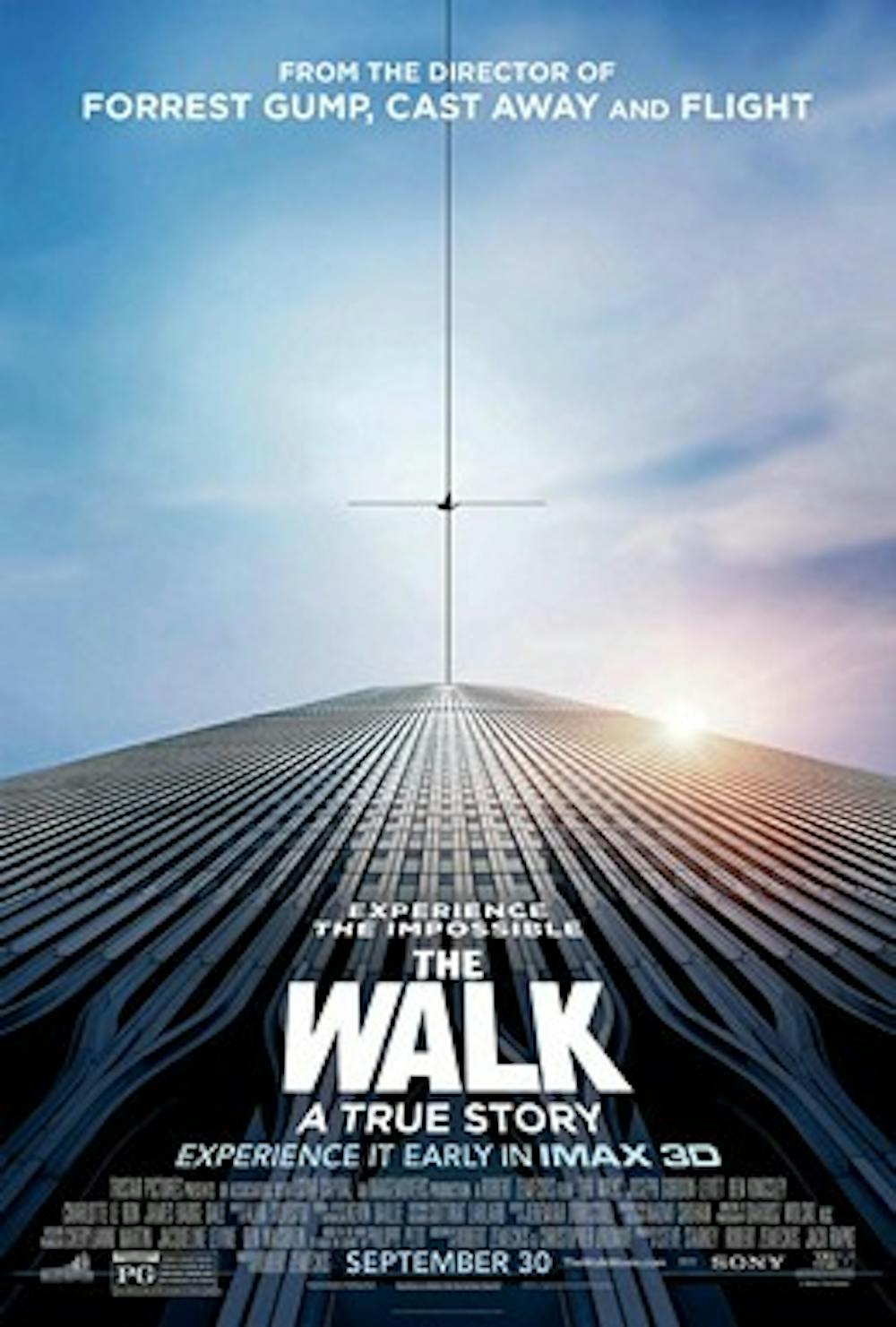It’s August 1974 and New Yorkers, on their morning commutes, happen to glance up at the newly constructed Twin Towers of the World Trade Center. A full quarter mile above them, they spot a man precariously balanced on a wire stretching between the corners of the towers.
In “The Walk,” directed by Robert Zemeckis, audiences get a close up view of this feat originally performed by French wire-walking artist Philippe Petit. Although the movie follows the story of Petit’s life from the first time he saw a wire-walker perform, the highlight is far and away his stunning performance between the towers.
The first half of the movie is unfortunately forgettable, touching on seemingly every movie cliché. Joseph Gordon-Levitt, in the role of Petit, sports a stereotypical French accent, and as he walks through the streets of Paris, everything fades to black and white with a few accents of red. During suspenseful scenes or arguments between characters, flashes of lightning and thunderclaps emphasize important lines.
Any attempt at subtle symbolism or meaning is seemingly abandoned. Instead, everything is explained to the audience. When Gordon-Levitt seals the final box of wire-walking supplies before his walk between the towers, he calls it the final nail in his coffin. As if the audience might miss the metaphor, Zemeckis uses visual effects to morph the box into a literal coffin, which Petit then literally nails shut.
Petit is surrounded by his “accomplices,” the friends who help him pursue his dream of the walk. Charlotte Le Bon plays Annie Allix, Petit’s girlfriend; Ben Kingsley plays Papa Rudy, a wire-walking master who teaches Petit the art; Clément Sibony plays Jean-Louis, a photographer who is recruited into helping with the act. Some of their performances are better than others, but it hardly matters as they have little chance to develop their characters. They are, for the most part, simply movie archetypes — Annie as the conflicted girlfriend who wants Petit to follow his dreams but worries about the danger, Papa Rudy as the wise old master and Jean-Louis as the intelligent voice of reason.
Then, after a slow first half, the movie develops momentum. Petit and his accomplices stake out the towers and plan the feat. It slowly builds until the audience gets what it came for: a beautiful 3-D rendering of the walk itself. This finale, “the coup” as Petit calls it, is what makes the movie worth seeing.
Petit crosses the wire eight times in total. Each cross, each turn, each wobble of the wire has the audience gasping, hearts in their mouths. There is no shortage of vertigo-inducing shots looking down from Petit’s point of view. The walk is captured from every imaginable angle — from above, from below, in sweeping shots of Petit in profile between the towers. Even audience members who have no fear of heights will have a white-knuckle grip on their seats at this point. This may well be the best use of 3-D video and CGI from any movie in recent memory.
The first half of “The Walk” may be largely forgettable, but it barely matters. The unbelievable spectacle of the titular feat itself is what movie-goers will remember.







